By precast structural elements off site and then assemble them rapidly on site, onsite bridge construction time can be reduced and product quality can be significantly improved. To achieve these objectives, easily constructible and structurally-sufficient connections for precast elements need to be established. Several connections for bridge substructures have been proposed and experimentally tested. However, completing of these connections in field is challenging due to very little construction tolerance. In order to address the challenges associated with current practice, the research detailed here investigated the connections proposed for bridge substructure, including driven pile-to-pile cap connection and pile cap-to-column connection. The investigation included comprehensive literature review on potential connection concepts and outdoor full-system experimental testing of a 50% scale test unit.
- Identify the existing connection details for pile-to-pile cap and pile cap-to-column, and experimental data on their performance.
- Investigate the overall performance of a bridge substructure consisting of steel H-piles, precast pile cap, and precast column.
- Investigate the behavior of the pile-to-pile cap connection and pile cap-to-column connection.
- Experimentally validation and document the pile-to-pile cap connection and pile cap-to-column connection.
- Develop suitable design recommendations and specifications along with a measure of improvement for pile-to-pile cap connection and pile cap-to-column connection.
Based on the findings of literature review, this investigation is decided to perform on the behavior of socket connection. Socket connections are constructed by embedding a precast structural member inside another member. For this research, corrugated metal pipes (CMP) is used as stay-in-place formwork to form the sockets on precast pile cap for both steel H-piles and precast column. Once the pile cap set on the driven piles, as illustrated below, the precast column is erected and be inserted into the socket on cap. The substructure is completed by using a grout/concrete closure pour in the preformed sockets.
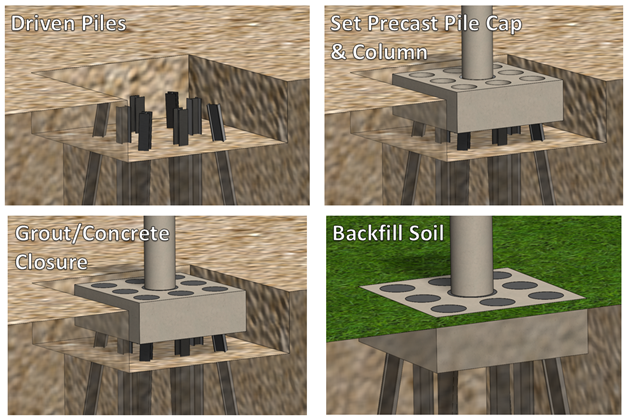
For the proposed socket connection, as shown below, gravity load acting on the column is resist by two components: (1) side shear stress through the embedded portion of column; (2) tip resistance acting at the end of column. The side shear strength relies on the condition of the interface between column and pile cap. However, there is no available guideline specifying the shear strength for the interface in proposed connection. Therefore, a series of tests were conducted to determine the resistance relied on the side shear strength and investigate the variables affecting shear strength.
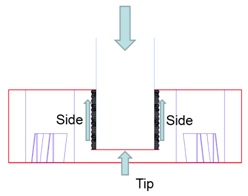
In the proposed connection, side shear strength depends on several factors due to the complexity of the interface. Shear stress transfer through the column concrete-to-grout interface, grout closure, grout-to-CMP interface, and CMP-to-cap concrete interface. Following list the potential variables may affect shear strength:
- column concrete-to-grout interface roughness;
- grout closure thickness;
- grout strength;
- concrete strength;
- CMP corrugation pattern.
This experimental test focused on the effect of column concrete-to-grout interface roughness and grout closure thickness. The testing specimen consists of a round column and a base block. A socket was formed on the base block by corrugated steel pipe. The column was then inserted into the socket. The specimen was finally completed by using a grout closure pour in the preformed socket. Column surface was intentionally roughed by form liner and in-form retarder to achieve various interface roughness. The columns were fabricated with same diameter, while the CMPs with different diameter were used to change the thickness of grout closure. A hydraulic jack applied gravity load at the top of column monotonically/cyclically until the connection failed.
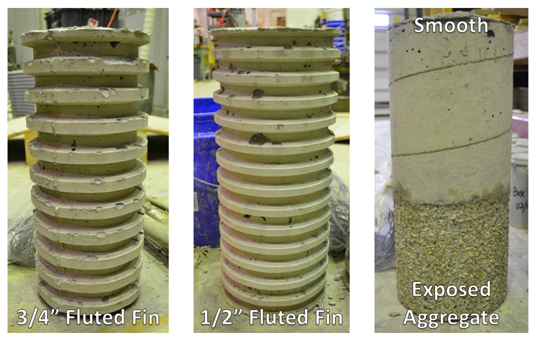
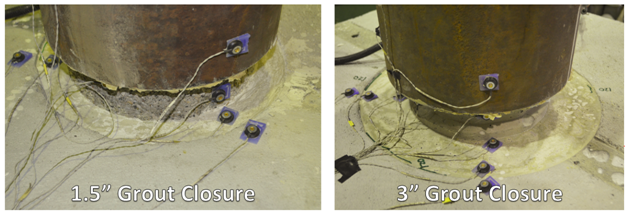
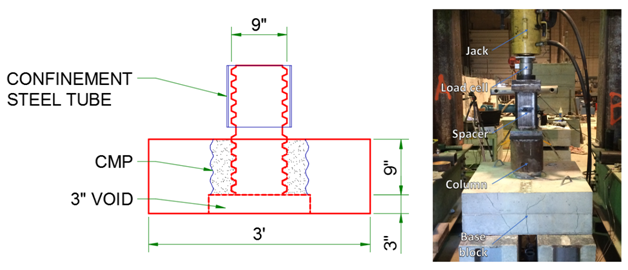
The half-scale outdoor full-system test is conducted to investigate the overall performance of bridge substructure as the interaction between the pile and surrounding soil. As the prototype of this test, a substructure consisting of steel driven piles, precast pile cap, and precast column is designed for a typical precast beam highway bridge. The test unit represents the prototype in manner of half scale. After the precast pile cap set on the pile group consisting of 8 driven piles, the precast column is inserted to the socket preformed on the cap by CMP. The piles and pile cap are connected by a self-consolidating concrete (SCC) closure pour in the preformed sockets for piles, and the column is integrated with pile cap by a grout closure pour due to the limited spacing between two precast components. Both gravity load and lateral load are applied at the top of column to simulate loads transferred from bridge superstructure. To complete this task, two reaction frames, supported by steel H-piles, are constructed next to the test unit, and a set of actuators are mounted to apply forces in both gravity and lateral direction.
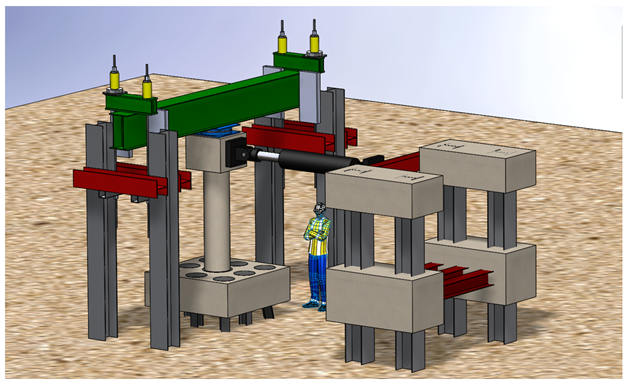
Wilson Engineering Professor, Iowa State University
Wilson Engineering Professor and member of the faculty in the Civil, Construction and Environmental Engineering at Iowa State University since December 1999. Following his Ph.D. from the University of California at San Diego, Sritharan’s research has focused on structural concrete and earthquake-resistant design. Other research interests of Sritharan include precast structural systems, soil-foundation-structure interaction, Ultra high performance concrete, and wind energy/wind engineering. For more details visit (http://sri.cce.iastate.edu/)
PhD Student, Iowa State University
Zhao Cheng is a PhD student in structural engineering at Iowa State University. After earning BS degree with honors in civil engineering from Iowa State University in 2013, Zhao began his research on bridge engineering under the guidance of Wilson Engineering Professor Sri Sritharan, and obtained his MS degree in civil engineering from Iowa State University in 2015. His research interests include accelerated bridge construction (ABC) and seismic-resistant design of bridges.